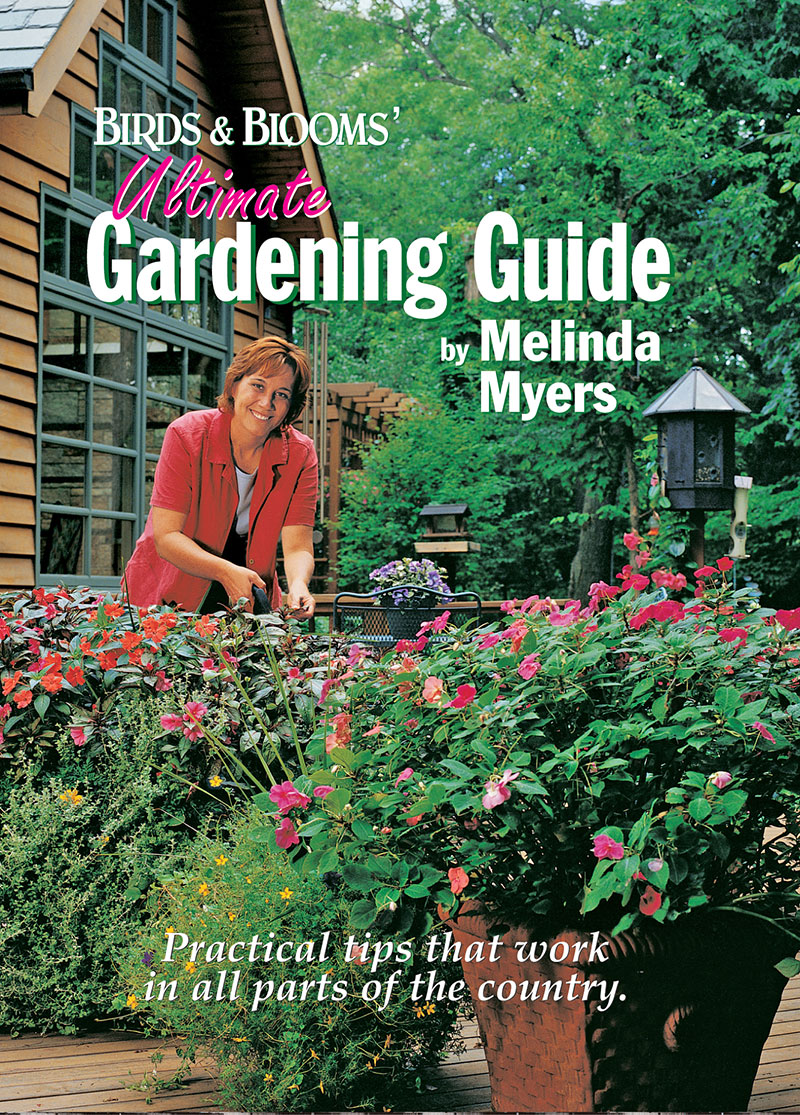September
Flowers & Ornamental Grasses
Flowers & Ornamental Grasses
- Fill voids and replace weatherworn annuals in gardens and containers with mums, asters, pansies, ornamental kale and other fall annuals.
- Start purchasing spring flowering bulbs now for the greatest selection of varieties and healthy bulbs.
- Always call 811, a free underground utility locating service, before preparing the garden bed or placing plants in the ground.
- Wait until the soil cools to begin planting spring flowering bulbs. This is usually after a hard freeze but before the ground freezes. Those in milder climates may need to plant precooled bulbs during the winter months.
- Plant animal resistant spring flowering bulbs or protect other bulbs from digging and damaging wildlife.
- Continue planting perennials when the soil is warm and the air is cool – perfect conditions for helping new plants become established.
- Begin planting perennial seeds in properly prepared soil.
- Keep watering as needed. Make new plantings, evergreens and moisture-loving plants a priority.
- Mulch the soil to conserve moisture, insulate roots and suppress weeds.
- Take cuttings of annuals you want to over winter indoors.
- Move tropical plants indoors as temperatures drop into the 40’s and before the first killing frost.
- Dig cannas, dahlias and other tender bulbs after the foliage has yellowed or a light frost kills the leaves.
- Dig, divide and transplant spring and summer-blooming perennials that have outgrown their location, failed to flower, flop open or died out in the center.
- There’s still time to dig, divide and move crowded and poor flowering iris.
- Dig and divide peonies you want or need to share and move.
- Stop deadheading perennials to increase winter hardiness and encourage seedheads to form, providing food for the birds and winter interest for you.
- Extend your fall floral display by covering tender flowers by late afternoon when frost is in the forecast.
- Evaluate the fall color in your mixed borders and perennial gardens. Consider adding some fall bloomers, those with colorful fall foliage or decorative seedheads.
- Remove and destroy insect-infested and diseased plant material to reduce the risk of future problems.
- Allow healthy pest-free perennials to stand for winter. They provide food for wildlife and habitat for beneficial insects.
- Improve the soil in annual flowerbeds by shredding and digging fallen leaves into the top 8 to 12” of soil once the growing season has ended.
Fruits, Vegetables & Herbs
Fruits, Vegetables & Herbs
- Create beautiful and edible fall garden containers. Colorful leaf lettuce, kale, mustard and vibrant Swiss chard cultivars brighten any fall combination.
- Add short season and frost tolerant vegetables like lettuce, radishes and beets to the garden or containers.
- Pinch out the growing tips and remove new blossoms on tomatoes and vine crops to promote ripening of the existing fruit.
- Harvest eggplants when the fruit reaches full size and skin is glossy.
- Pick muskmelon when the fruit stem starts to separate from the melon.
- Harvest watermelons when the fruit are full sized, dull colored and the portion touching the ground changes from white to cream.
- Harvest winter squash and pumpkins when fully mature and before the first damaging frost.
- Dig sweet potatoes before the first frost.
- Harvest full sized potatoes suitable for storing when the tops die.
- Make one fall harvest of rhubarb before the first fall frost. Cut the stems back to ground level and add them to the compost pile after a hard freeze.
- Continue harvesting herbs as needed and for preserving.
- Plant garlic cloves in the middle to the end of this month.
- Keep watering as needed. Make new plantings a priority.
- Extend the bounty of the season by covering tender plants with floating row covers when frost is in the forecast.
- Improve the soil in annual vegetable gardens by shredding and digging fallen leaves into the top 8 to 12” of soil once the season has ended.
- Leave healthy asparagus stems stand for winter.
- Harvest apples when the indentation by the stem turns from green to yellow and the fruit can easily be twisted off the branch.
- Continue picking pears when they turn from dark green to yellowish green and before they start falling from the trees.
- Harvest plums when fully colored and sweet.
- Pick grapes when the tip of the bunch appears mature and tastes sweet.
- Harvest early-ripening fall raspberries when fully colored and sweet.
- Compost pest-free plant material.
Groundcovers & Vines
Groundcovers & Vines
- Fall is an excellent time to plant perennial vines and groundcovers. Always call 811, a free underground utility locating service, before putting the first shovel in the ground.
- Select and plant vines and groundcovers that provide fall color.
- Make fall cleanup easier. Cover groundcover plantings with netting to capture and remove fall leaves.
- Move tropical vines indoors as temperatures begin to hover in the 40’s.
Indoor & Holiday Plants
Indoor & Holiday Plants
- Purchase some extra spring-flowering bulbs for forcing.
- Improve your indoor air quality by adding a few easy care houseplants to your indoor garden.
- Isolate and acclimatize plants as you move them indoors for winter. Monitor and manage pests as needed.
- Stop watering your amaryllis if you plan to force it into bloom by letting it go dormant in a cool dark location for 6 to 8 weeks.
- Adjust your watering schedule to accommodate the changes in light intensity, daylight and other indoor growing conditions.
- Consider investing in artificial lights if your indoor plant collection or plants moved indoors for winter have outgrown the available window space.
Lawns
Lawns
- Fertilize your lawn with a low nitrogen slow release fertilizer, like Milorganite, in early September to encourage healthy dense growth that is better able to compete with weeds.
- Continue to mow high as long as your grass continues to grow.
- Now is a great time to plant cool season grass (bluegrass, fescue and perennial rye) seed whether starting a new lawn, filling bare spots or overseeding existing turf.
- Overseed warm season grasses with cool weather tolerant perennial rye for a green lawn all winter long.
- September and October are excellent times to core aerate cool season lawns growing on compacted soil or with more than ½” of thatch.
- A healthy lawn is your best defense against weeds. If you must intervene, spot treat broadleaf weeds (dandelions, violets and plantain) growing in cool season grass lawns.
- Wait for a hard freeze when treating creeping Charlie (ground ivy).
- Mow, don’t rake, fall leaves. As long as the pieces are smaller than a quarter and you can see the grass blades, the lawn will be fine.
Trees, Shrubs & Roses
Trees, Shrubs & Roses
- Fall is a great time to plant trees, shrubs and hardy roses. The soil is warm and air is cool, aiding in their establishment.
- Always look up for overhead utilities and call 811, a free underground utility locating service, before digging in.
- Evaluate the fall foliage, fruit and bark color in the landscape. Plan new additions that provide additional color to your fall landscape.
- Replenish mulch around established plantings of trees, shrubs and roses as needed.
- Keep watering as needed. Make new plantings, evergreens and moisture-loving plants a priority.
- Do not fertilize trees, shrubs and roses if these plants go dormant for winter.
- Recycle fall leaves using them as a soil mulch in perennial plantings, a soil amendment in annual gardens or convert them into compost.
- Limit pruning to only dead, diseased or hazardous branches.
- Those in cooler climates should stop deadheading roses allowing them to prepare for winter and form attractive rose hips to feed the birds and add color to the winter landscape.
- Monitor trees for fall webworm. Nature usually keeps the populations in check. Remove and destroy fall webworm nests if needed.
- Remove and destroy any gypsy moth egg masses found on tree trunks.
- Don’t be alarmed by black and orange boxelder bugs congregating on the southside of your home. They are annoying, but not harmful.
- Begin installing animal barriers or applying repellents as needed to protect trees, shrubs and roses from hungry wildlife.
Categories
Upcoming Live Events
& Webinars
April 27, 2024
Ridges & Rivers Book Festival
Viroqua, WI
Register now
April 28, 2024
Flowering Trees and Shrubs
Ebert's Greenhouse Village, Ixonia, WI
May 1, 2024
FREE WEBINAR
Ornamental Fruits and Vegetables
Register now
May 4, 2024
Garden U 2024
New Richmond, WI
Register now
May 9, 2024
FREE WEBINAR
How to Plant Your Rain Garden
Register now
May 11, 2024
Ask The Plant Doctor Q & A
Ebert's Greenhouse Village, Ixonia, WI
May 12, 2024
Ask The Plant Doctor Q & A
Ebert's Greenhouse Village, Ixonia, WI
May 18, 2024
Ask The Plant Doctor Q & A
Ebert's Greenhouse Village, Ixonia, WI
June 1, 2024
Selecting, Planting, Pruning and Caring for Hydrangeas
Ebert's Greenhouse Village, Ixonia, WI
June 5, 2024
FREE WEBINAR
Under-Appreciated Pollinators
Register now
WATCH ON-DEMAND WEBINARS
Learn More










